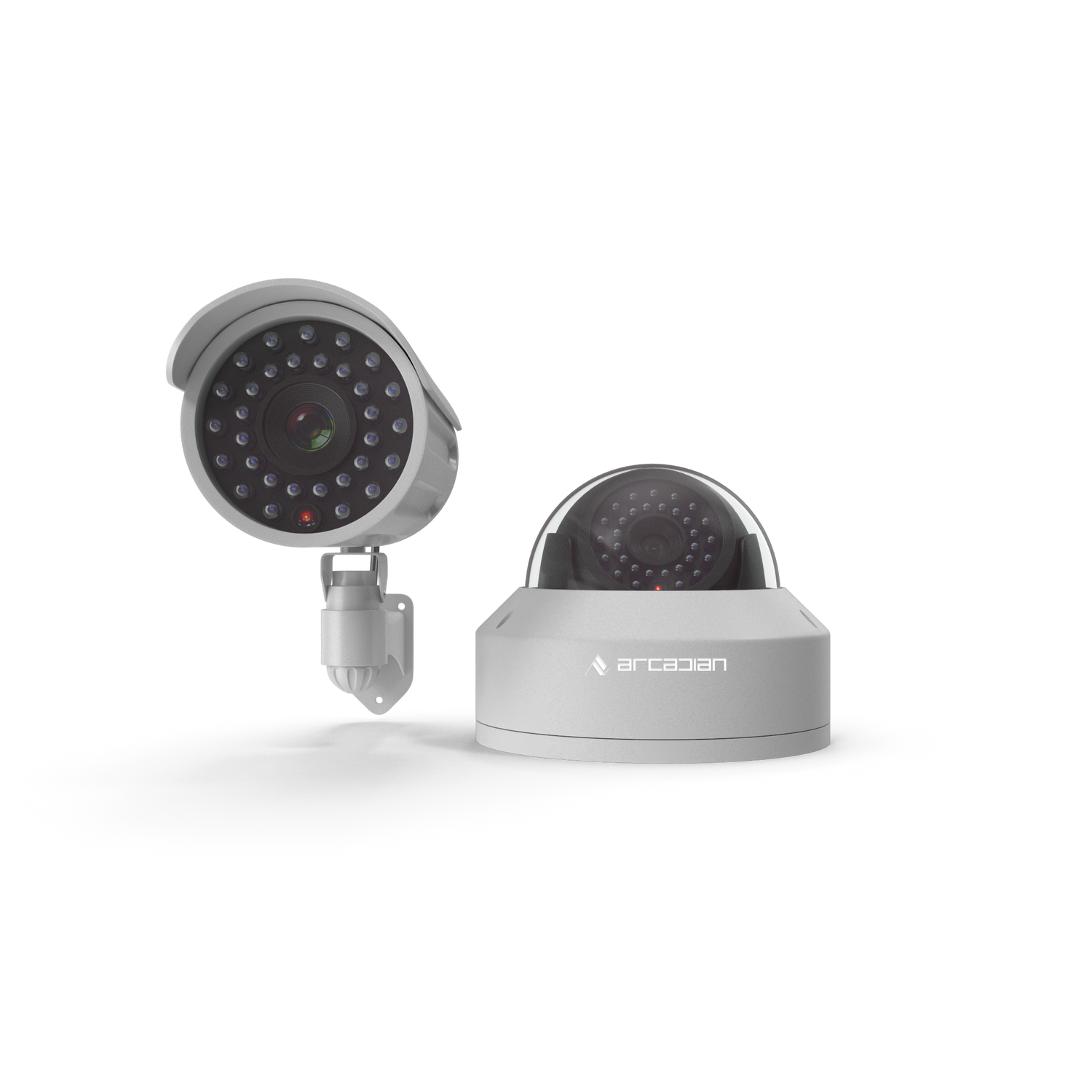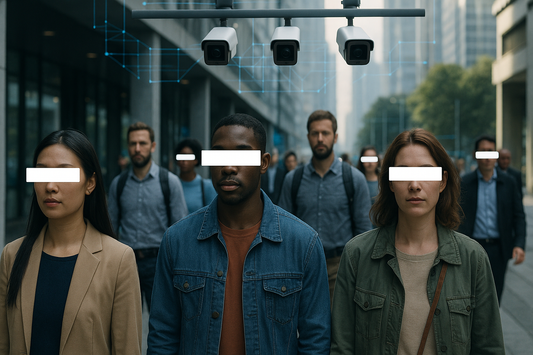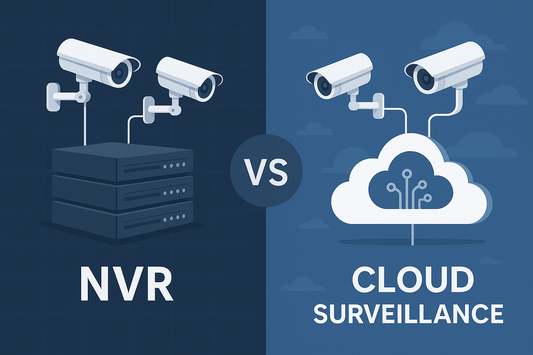CCTV and Cybersecurity: The Silent Threat Lurking in Your Network
CCTV systems are no longer passive watchers — they are active risk vectors in many networks. Learn how adversaries exploit IP camera vulnerabilities, the effects of Hikvision/Dahua bans and NDAA rules, and how ArcadianAI’s secure “Bridge” onboarding model mitigates the silent threat.
- Introduction
- Quick Summary / Key Takeaways
- Why This Matters in December 2025
- The Hidden Risks of CCTV Cybersecurity
- The Silent Threat in Your Network: A Walkthrough Attack Scenario
- How ArcadianAI Solves the Problem: The “Bridge” Onboarding Model
- Comparative Landscape: ArcadianAI vs. Legacy & Competitors
- Best Practices & Risk Mitigation (If You Can’t Rip & Replace Immediately)
- Frequently Asked Questions (FAQ)
- Conclusion & CTA
Introduction
In 2025, as organizations race to adopt AI-powered analytics and edge computing on their CCTV systems, a new frontier of cyber risk is rising. Surveillance infrastructure—once treated purely as “physical security”—is now deeply enmeshed in IT and must be defended like any server or appliance. Yet far too often, it is ignored until disaster strikes.
ArcadianAI was designed from day one to bridge the gap between physical and cyber defense. Our Ranger assistant and cloud-native, camera-agnostic platform treat every camera as a potential entry point—and mitigate that risk at onboarding. In this post, we’ll explore how poorly secured CCTV systems serve as silent attack vectors, examine the legal and geopolitical regulatory pressure around Hikvision and Dahua devices (including NDAA compliance), and show how a secure onboarding “Bridge” model can harden your network defense.
We’ll weave in compelling data from FBI, CISA, and GAO sources—and contrast our proactive approach with what many legacy systems leave exposed.
Quick Summary / Key Takeaways
-
Unmanaged CCTV systems are often the weakest link in enterprise networks
-
IP camera vulnerabilities (backdoors, default creds, firmware flaws) are well-documented
-
U.S. bans on Hikvision and Dahua under NDAA / FCC emphasize geopolitical risk
-
New attack vectors include physical-to-digital exploits (e.g. laser-induced DoS)
-
ArcadianAI’s “Bridge” onboarding model ensures secure integration, network isolation, and compliance
Why This Matters in December 2025
-
Accelerating convergence of physical + cyber systems: CCTV systems now host AI analytics, edge computing, motion detection logic, and API integrations—expanding the attack surface.
-
Regulation and supply chain pressure: Governments are tightening rules on which surveillance devices are allowed, especially for critical infrastructure and federal systems.
-
Rising sophistication of attacks: Threat actors are blending cyber, physical, and optical methods (e.g. lasers, infrared, firmware attacks) to exploit CCTV systems.
-
High cost of recovery: An exploited CCTV network can serve as an entry into sensitive resources, exfiltrate video, or act as a pivot point—leading to reputational, operational, and regulatory fallout.
The Hidden Risks of CCTV Cybersecurity
IP Camera Vulnerabilities — A Field of Weakness
Modern IP cameras are essentially small Linux computers with network stacks, firmware, remote access features, storage, sometimes wireless, and API endpoints. That breadth of functionality means many potential weak points.
Common vulnerability categories:
-
Default or hardcoded credentials
Many camera models ship with default usernames/passwords or even backdoor accounts. Attackers routinely scan for those and gain root or admin access. -
Firmware flaws & incomplete patching
Cameras often lag in firmware updates. Vulnerabilities like buffer overflows, command injection, or remote code execution persist unpatched.
For example, Hikvision cameras have been tied to vulnerabilities enabling remote command execution without proper authentication (Phosphorus). -
Hidden backdoors or OEM-embedded code
Some devices include hidden or undocumented services (for remote support/test) that cannot be disabled. -
Exposure to network or Internet
Cameras often are placed in DMZ networks or poorly segmented VLANs. If they can reach the Internet or be reached externally, they become easy pivot points. -
Supply chain or disguised devices
Devices white-labeled under different brands may embed banned or risky components. Detection solely via MAC/OUI is often insufficient (Phosphorus). -
Novel physical-to-digital attack vectors
-
In a recent 2025 research paper, attackers showed how pointing a laser at a variable-bitrate IP camera can force it to flood the network—reducing available bandwidth by 90%. (arXiv)
-
Earlier work (aIR-Jumper) showed how IR LEDs on cameras could be modulated for covert exfiltration or command injection across an “air-gap”. (arXiv)
-
-
Hidden camera modules (spy cameras)
These small devices, sold cheaply and rebranded, often lack basic security hygiene. One academic study found every component (firmware, auth, session logic, communication) in such modules was flawed—and that remote arbitrary code execution was possible simply with knowledge of a device’s serial number. (arXiv)
When even one exploitable camera attaches to your internal network, it can serve as a beachhead for lateral movement and deeper breach.
Regulatory & Geopolitical Pressure: Hikvision, Dahua, and the NDAA Ban
The risks go beyond mere technical vulnerabilities. In the U.S. and in allied countries, regulatory pressure is now reshaping which devices are permissible.
The NDAA / Section 889 Ban
-
The 2019 National Defense Authorization Act (NDAA) includes Section 889, which prohibits U.S. federal agencies, their contractors, and recipients of federal grants from procuring or using video surveillance equipment from certain manufacturers, notably Hikvision and Dahua, and their OEM affiliates. (SCW)
-
Organizations must remove and replace equipment originating from banned manufacturers by certain deadlines. (SCW)
-
The ban doesn’t just block camera models—they also restrict components or “substantial parts” from blacklisted vendors, even if rebranded. (SCW)
Because of this, many federal, state, and critical infrastructure operators have moved away from these brands (or forced redesigns).
FCC & Import / Sales Restrictions
-
The FCC’s “Interim Freeze Order” in 2022 prohibited new imports, deals, or certifications of Hikvision and Dahua equipment in many contexts. (Wikipedia)
-
Some U.S. states and Canadian authorities have followed suit; notably, in 2025 the Canadian government ordered Hikvision Canada Inc. to cease operations. (Coram AI)
Risk of Non-Compliance
Using non-NDAA compliant devices in regulated settings risks contract termination, disqualification from government work, and hefty remediation costs. Many integrators and buyers are now treating NDAA compliance as existential in security procurement. (Lumana)
Beyond compliance, the reputational and national security risks are nontrivial: surveillance systems provide access to video, metadata, even analytics—making them high-value espionage targets.
Real-World Risk Data & Trends
-
The FBI’s 2024 Internet Crime Report recorded 859,532 complaints and over $16 billion in losses — up ~33% year-over-year. (Federal Bureau of Investigation)
-
CISA’s 2024 year-in-review highlights greater targeting of industrial control systems and critical infrastructure, urging stronger collaboration between OT and IT teams. (CISA)
-
A 2024 GAO report flagged challenges in coordinating between CISA and agencies to manage infrastructure-wide security risks. (Government Accountability Office)
While these reports don’t always parse “CCTV-specific” breaches, they underscore how pervasive and rising cyber risk is—and how often administrative and cross-domain gaps (like CCTV integration) are overlooked.
The Silent Threat in Your Network: A Walkthrough Attack Scenario
Let’s sketch how an attacker might exploit a CCTV network in December 2025:
-
Recon & scan
The attacker scans your external IP blocks or VPN terminals, finds a camera with open port 80/443 or RTSP. -
Credential & firmware exploit
They use known default/hardcoded credentials or exploit a firmware RCE to gain root access. -
Persistence & lateral pivot
They load malware or SSH into the device; cameras often can see or route toward internal subnets. Via ARP cache poisoning, routing misconfigurations, or missegmented VLANs, they move laterally to servers or NVRs. -
Data exfiltration or espionage
Using the camera’s LED/IR capabilities, they might transmit data covertly (aIR-Jumper style) or stream video externally. -
C2 & coordination
They embed command & control via disguised HTTP API or DNS tunneling over camera access. -
Cleanup or persistent backdoor
They leave a stealthy module, dormant, to reactivate later. Meanwhile, they may delete or tamper logs to cover tracks.
Alternatively, as shown in the laser-attack research, they could cause DoS/traffic storms by physically manipulating the camera’s environment, impacting network stability for adjacent infrastructure. (arXiv)
Without proper segmentation and monitoring, this cascade can lead to catastrophic breach, ransomware deployment, IP theft, or even sabotage.
How ArcadianAI Solves the Problem: The “Bridge” Onboarding Model
ArcadianAI is architected from the ground up to treat CCTV systems as first-class IT assets—not “set it and forget it” devices. Our Bridge onboarding model has three core pillars:
| Pillar | Description | Benefits |
|---|---|---|
| Secure Discovery & Classification | At onboarding, the Bridge actively discovers every camera, NVR, and associated component—including hidden or disguised devices. | No “blind spots” or unaccounted devices. |
| Zero-Trust Network Segmentation | Cameras are placed into dedicated micro-segments (VLANs / firewall zones). The Bridge enforces strict rules: only allowed flows (e.g., to our cloud, to analytics engines) and denies lateral traffic. | Prevents pivot; limits blast radius. |
| Continuous Compliance & Monitoring | The Bridge continuously monitors firmware versions, certificate health, device integrity, access patterns, and flags NDAA compliance issues or banned devices. | Early warning & remediation before breach. |
Step-by-step Bridge Workflow
-
Initial network audit & passive scan
The Bridge scans your network segments (layer 2/3) to identify cameras, unknown IPs, and anomalous devices—even if disguised or rebranded. -
Risk scoring & vendor classification
Each device is scored for risk: manufacturer, firmware age, known CVEs, default credentials, component pedigree (e.g. banned OEM parts). -
Isolate & quarantine strategies
High-risk or unknown devices are quarantined until validated. The Bridge can enforce firewall rules or micro-VPNs. -
Onboarding and secure enrollment
Devices are enrolled one-by-one with secure keys, certificate issuance, encrypted streaming channels, and configuration hardening (e.g. disable unused services, enforce strong credentials). -
Policy enforcement & alerting
The Bridge watches for deviations: changes in firmware, suspicious login attempts, metadata anomalies, or unusual traffic bursts (e.g. due to DoS). It alerts Ranger or SOC operators automatically. -
Operational integration
Video streams flow into ArcadianAI’s cloud-native system (or hybrid mode), with role-based access, audit logs, tamper alerts, and model-driven anomaly detection—all while preserving encryption end-to-end.
With this model, CCTV devices become hardened, monitored network assets — not silent vectors.
Comparative Landscape: ArcadianAI vs. Legacy & Competitors
Below is a qualitative comparison of how ArcadianAI stacks up versus traditional on-prem NVR/VMS systems, vs. common VSaaS players.
| Feature / Concern | Legacy NVR / VMS | Typical VSaaS / Traditional Platforms | ArcadianAI + Bridge / Ranger |
|---|---|---|---|
| Threat-aware onboarding | Manual, ad-hoc, inconsistent | Some onboarding protocols, often lacking deep device vetting | Deep automated discovery, risk scoring, quarantining |
| Network segmentation | Cameras often share flat network with servers | Some network segmentation, but often broad access | Zero-trust microsegmentation; strict flow control |
| Continuous monitoring / security posture | Minimal — often once deployed, seldom revisited | Basic health alerts, but often no security posture view | Full vulnerability tracking, behavior analytics, alerting |
| Support for banned / NDAA-risk devices | No built-in checks | Some compliance flags, but often blind to OEM relations | Flags banned OEM parts, quarantines, enforces compliance |
| Scalability & management | Scalability issues, siloed systems | Better scaling but often opaque integrations | Cloud-native, multi-site, unified dashboard |
| Operational overhead | High (manual maintenance, updates, patching) | Medium | Automated patch tracking, orchestrated updates, minimal effort |
| Incident recoverability / audit trail | Weak — logs often insufficient | Varies | Full audit logs, chain-of-custody, forensic insights, automated rollback |
Return on Investment (ROI) Considerations
-
Reduced breach cost: By preventing intrusion vectors, organizations avoid catastrophic incidents.
-
Lower maintenance overhead: Automated discovery, patching alerts, and policy enforcement reduce labor.
-
Compliance readiness: Avoid costly rip-and-replace for NDAA / regulatory violations.
-
Faster deployment & updates: The Bridge enables rolling upgrades without downtime.
Best Practices & Risk Mitigation (If You Can’t Rip & Replace Immediately)
Even if you can’t migrate to a hardened system immediately, here are steps to mitigate risk:
-
Isolate CCTV networks physically or virtually
Use VLANs or physically separate switches and routers. Deny lateral movement. -
Block Internet access for cameras wherever possible
Only allow necessary flows (e.g. to VMS server or cloud). -
Enforce strong credentials & disable defaults
Change all default accounts, disable unused services (Telnet, SSH, RTSP, ONVIF where unused). -
Keep firmware up to date & monitor advisories
Subscribe to vendor and vulnerability mailing lists (e.g., CISA alerts) (CISA). -
Disable or monitor remote access / P2P services
Many cameras include remote cloud/web services. Disable unless strictly needed. -
Perform regular audits
Scan your camera subnets for unknown MACs, traffic anomalies, device changes. -
Use IDS/IPS or anomaly detection on camera VLANs
Monitor for unexpected flows or unusual traffic volumes. -
Plan migration paths
Prepare for replacing banned or high-risk devices with NDAA-compliant models.
Frequently Asked Questions (FAQ)
Q1: Does the Hikvision / Dahua ban apply to private businesses or only government sites?
A1: The NDAA ban explicitly applies to U.S. federal agencies, contractors, and entities receiving federal funding. However, many states and integrators treat it broadly. In Canada, Hikvision was ordered to cease operations in 2025. (Coram AI)
Q2: Are rebranded / white-label cameras safe if rebranded under a Western brand?
A2: Not necessarily. The underlying components or firmware may still come from banned or high-risk vendors. Tools that rely on MAC/OUI alone may miss disguised devices. (Phosphorus)
Q3: Can I secure my existing CCTV system without full replacement?
A3: Yes—by isolating the network, enforcing strong credentials, limiting flows, and monitoring. But these are compensating controls. Long-term, a hardened onboarding and compliance-first model (like ArcadianAI) is safer.
Q4: How common are attacks on CCTV systems today?
A4: While public disclosures are limited, academic and industry research (e.g. backdoors, default passwords, code execution) illustrate that the risk is real and accessible. Attackers focus on low-hanging fruit.
Q5: What should I look for in an NDAA-compliant camera/system?
A5: Key criteria include: transparent component sourcing, vendor statements of compliance, firmware update history, strong encryption, and no banned OEM parts. (Facit Data Systems)
Conclusion & CTA
In December 2025, CCTV systems are no longer passive observers—they are active layers in your attack surface. The intersection of IP camera vulnerabilities, supply chain risk (e.g. banned vendors like Hikvision/Dahua), and evolving adversary techniques (optical/physical-to-digital attacks) make the stakes higher than ever.
ArcadianAI’s Bridge onboarding model turns CCTV systems from liabilities into hardened assets. We ensure you never deploy a blind camera, enforce zero-trust segmentation, continuously monitor vulnerabilities, and stay ahead of compliance requirements like NDAA.
Don’t wait for the breach to expose your surveillance gaps. See ArcadianAI in Action →
Security Glossary (2025 Edition)
-
CCTV (Closed-Circuit Television) — A surveillance system using cameras and monitors, increasingly networked via IP protocols.
-
IP Camera — A camera that transmits video and other data over Internet Protocol (IP) networks.
-
Backdoor — A hidden method of bypassing normal authentication or security controls.
-
RCE (Remote Code Execution) — A vulnerability allowing an attacker to run arbitrary code on the target device.
-
NDAA (National Defense Authorization Act) — U.S. federal legislation; Section 889 bans certain surveillance equipment from use by federal systems.
-
OEM (Original Equipment Manufacturer) — A manufacturer of components reused by other brands; risk arises when a banned OEM is rebranded.
-
Zero-Trust Segmentation — Network design principle that denies all access by default, granting only minimal required flows.
-
Bridge Onboarding Model — ArcadianAI’s secure, stepwise method to discover, isolate, harden, and monitor CCTV devices.
-
aIR-Jumper — A covert channel attack using infrared LEDs on cameras to exfiltrate or inject data.
-
Variable-bitrate DoS — A method of forcing cameras to flood networks by manipulating light/scene activity to spike bitrate.
-
Pivot — Using a compromised device to move laterally in the network, attacking more critical systems.
-
Threat Score / Risk Scoring — A computed score reflecting the security risk of a device based on attributes and behavior.

Security is like insurance—until you need it, you don’t think about it.
But when something goes wrong? Break-ins, theft, liability claims—suddenly, it’s all you think about.
ArcadianAI upgrades your security to the AI era—no new hardware, no sky-high costs, just smart protection that works.
→ Stop security incidents before they happen
→ Cut security costs without cutting corners
→ Run your business without the worry
Because the best security isn’t reactive—it’s proactive.






